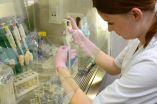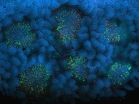(Press-News.org) More than 1 in 4 female sex workers in the northern Mexico cities of Tijuana and Ciudad Juarez reported entering the sex trade as minors, and entering the sex trade as an adolescent vs as an adult was associated with a greater risk for HIV infection, according to a study in the August 4 issue of JAMA, a violence/human rights theme issue.
Adolescents migrating from Central America and Mexico to the United States are at risk for being trafficked into the sex industry in Mexico's northern border cities. Research from other regions indicates that those entering the sex trade as adolescents (vs as adults) are more likely to experience sexual violence and to become infected with HIV. Apart from 1 study among injection drug users, no research exists on the prevalence of minors in the sex industry in Latin America or their subsequent risk for violence and HIV infection, according to background information in the article.
Jay G. Silverman, Ph.D., of the University of California-San Diego, La Jolla, Calif., and colleagues studied female sex workers age 18 years or older from Tijuana and Ciudad Juarez. Indoor and street sex work venues were randomly sampled based on mapping of all venues. Confidential computer-assisted surveys were completed to assess prevalence of adolescent (ages 16-17 years) and early adolescent (ages 10 clients/day), and no condom use during the initial 30 days after entry.
Of 1,041 individuals screened, 614 were eligible and 603 participated. The average age was 34 years; 25.4 percent reported entering the sex trade before the age of 18 years and 11.8 percent reported entry before the age of 16 years. Compared with those entering sex work as adults, those entering the sex trade as adolescents were more likely to report experiencing violence to force commercial sex (19.7 percent among those aged END
One-fourth of female sex workers in northern Mexican cities enter sex trade as minors
2015-08-04
ELSE PRESS RELEASES FROM THIS DATE:
High rates of violence, HIV infection for adolescents in sex trade on US-Mexico border
2015-08-04
Researchers at University of California, San Diego School of Medicine report that more than one in four female sex workers in two Mexican cities on the U.S. border entered the sex trade younger than age 18; one in eight before their 16th birthday. These women were more than three times more likely to become infected with HIV than those who started sex work as adults. They were also three times more likely to be violently coerced to engage in sex with male clients and seven times less likely to use a condom during their first month in the sex trade.
The study is published ...
Scientists solve mystery behind earthworm digestion
2015-08-04
Scientists have discovered how earthworms can digest plant material, such as fallen leaves, that would defeat most other herbivores.
Earthworms are responsible for returning the carbon locked inside dead plant material back into the ground. They drag fallen leaves and other plant material down from the surface and eat them, enriching the soil, and they do this in spite of toxic chemicals produced by plants to deter herbivores.
The scientists, led by Dr Jake Bundy and Dr Manuel Liebeke from Imperial College London, have identified molecules in the earthworm gut that ...
New device converts DC electric field to terahertz radiation
2015-08-04
WASHINGTON, D.C., August 4, 2015 -- Terahertz radiation, the no-man's land of the electromagnetic spectrum, has long stymied researchers. Optical technologies can finagle light in the shorter-wavelength visible and infrared range, while electromagnetic techniques can manipulate longer-wavelength radiation like microwaves and radio waves. Terahertz radiation, on the other hand, lies in the gap between microwaves and infrared, whether neither traditional way to manipulate waves works effectively. As a result, creating coherent artificial sources of terahertz radiation in ...
A droplet's pancake bounce
2015-08-04
WASHINGTON, D.C., August 4, 2015 -- Studies of the impact a droplet makes on solid surfaces hark back more than a century. And until now, it was generally believed that a droplet's impact on a solid surface could always be separated into two phases: spreading and retracting.
But it's much more complex than that, as a team of researchers from City University of Hong Kong, Ariel University in Israel, and Dalian University of Technology in China report in the journal Applied Physics Letters, from AIP Publishing.
"During the spreading phase, the droplet undergoes an inertia-dominant ...
New weapon in the fight against malnutrition
2015-08-04
UBC scientists have opened the doors to new research into malnutrition by creating an animal model that replicates the imbalance of gut bacteria associated with the difficult-to-treat disease.
Malnutrition affects millions of people worldwide and is responsible for one-fifth of deaths in children under the age of five. Children can also experience impaired cognitive development and stunted growth.
The problem arises when people don't have enough food to eat and their diet lacks proper nutrients. The disease also has a lot to do with environmental factors and it has ...
In vitro cellular response to osteopathic manipulative therapy provides proof of concept
2015-08-04
In vitro studies of the cellular effects of modeled osteopathic manipulative therapy (OMT) provide proof of concept for the manual techniques practiced by doctors of osteopathic medicine (DOs), according to researchers from the University of Arizona College of Medicine - Phoenix.
The study, published in The Journal of the American Osteopathic Association, focused on modeling two common OMT techniques, myofascial release and counterstrain. Researchers subjected fibroblast matrices to various strains and employed a scratch wound strain model to test the ability of OMT ...
New strain of yeast to be helpful in toxic waste removal
2015-08-04
A new strain of yeast called Yarrowia lipolytica Y-3492 was found to be very active in waste water treatment. The discovery was made by by microbiologists from Kazan Federal University during their research at Western Siberian peat bogs.
The strain is said to be effective against nitro compounds which are used in explosives, herbicides, insecticides, polymers, dyes, and some medications. Oil refineries and military equipment plants produce especially high amounts of such waste. The research was conducted with the use of widely known trinitrotoluene (TNT).
It is well-known ...
Natural cocktail used to prevent, treat disease of wine grapes
2015-08-04
COLLEGE STATION -- It's happy hour at a lab in College Station. The cocktail of choice, developed by scientists with Texas A&M AgriLife Research, is one that stops or prevents the deadly Pierce's disease on wine grapes.
The discovery could turn a new leaf on the multimillion-dollar U.S. wine industry. Hear, hear.
The study, published in the academic journal PLOS ONE, describes the use of four bacteriophages that were identified for their ability to attack the bacteria that causes the devastating disease in grapes and several other plants.
A bacteriophage, or phage, ...
Crop pests outwit climate change predictions en route to new destinations
2015-08-04
A paper from the University of Exeter has highlighted the dangers of relying on climate-based projections of future crop pest distributions and suggests that rapid evolution can confound model results.
Crop pests and pathogens are destructive organisms which pose a huge threat to food security and land management across the world. Much research has been carried out into why the pests are spreading, where they are likely to establish next, what damage they will do and what can be done to reduce their impact.
In a new synthesis, published today in the Annual Review of ...
Brain infection study reveals how disease spreads from gut
2015-08-04
Diagnosis of deadly brain conditions could be helped by new research that shows how infectious proteins that cause the disease spread.
The study reveals how the proteins - called prions - spread from the gut to the brain after a person or animal has eaten contaminated meat.
Scientists say their findings could aid the earlier diagnosis of prion diseases - which include variant Creutzfeldt-Jakob disease (vCJD) in people and bovine spongiform encephalopathy (BSE) in cows.
In people, the disease remains very rare - 229 people have died from vCJD since it was first identified ...





